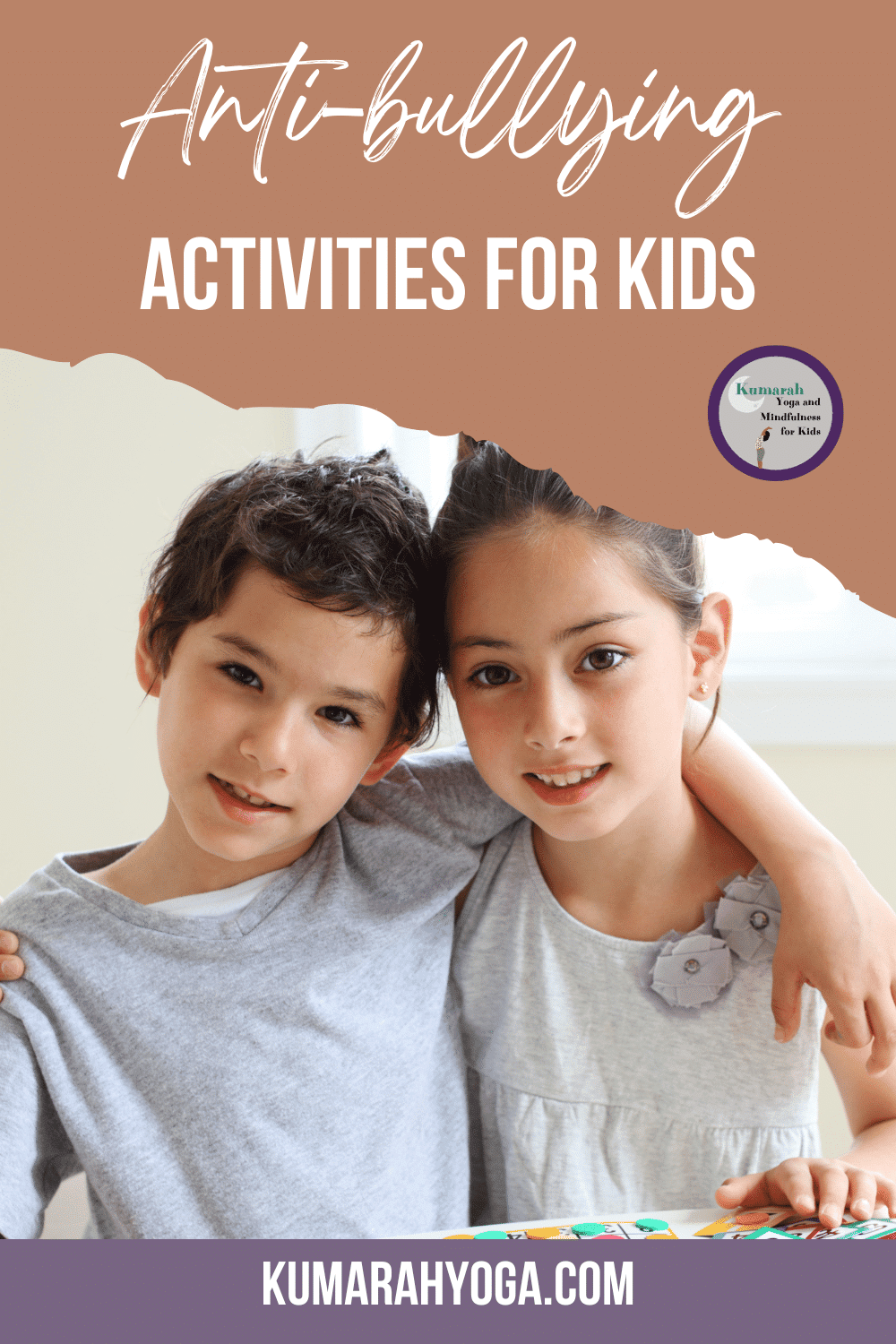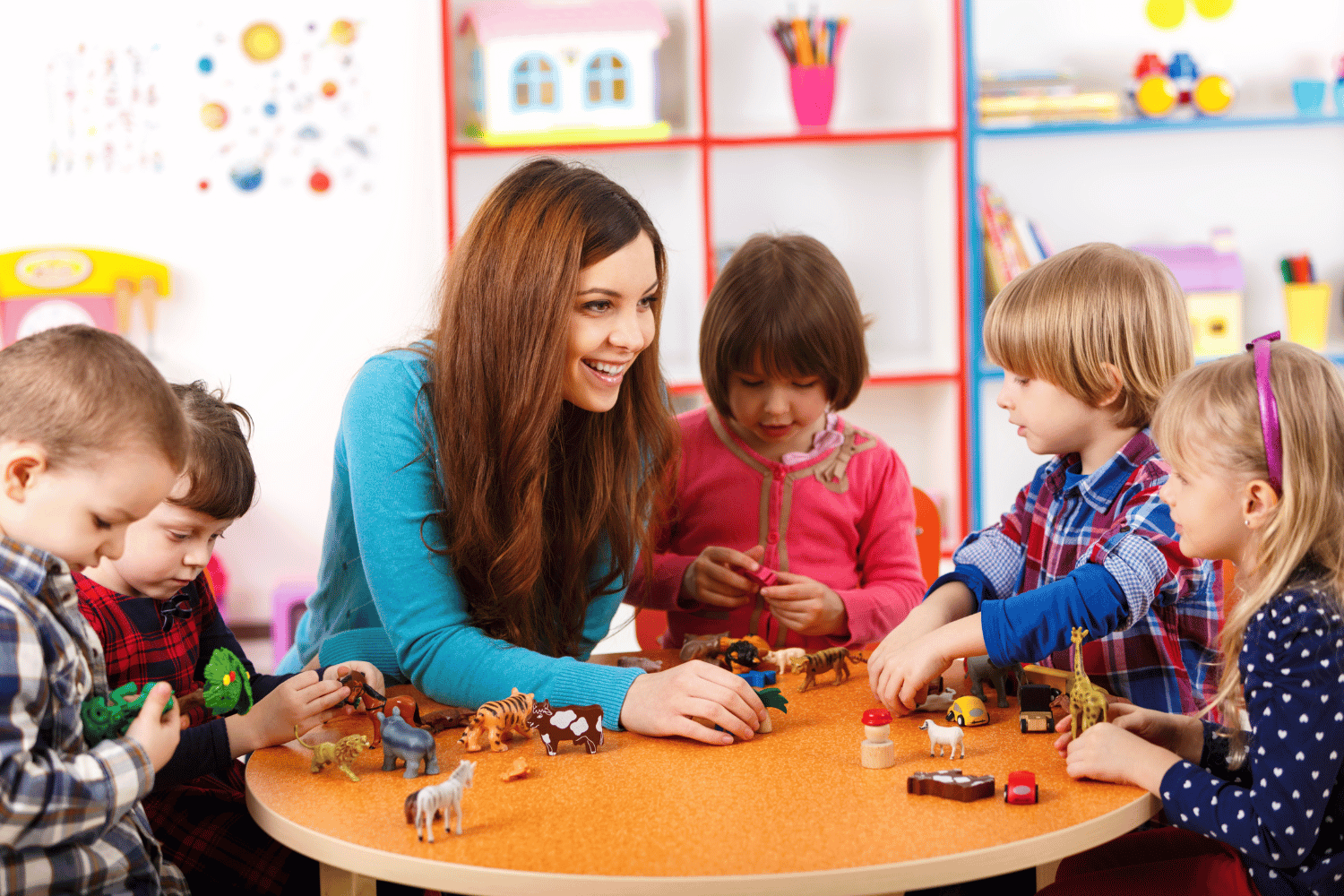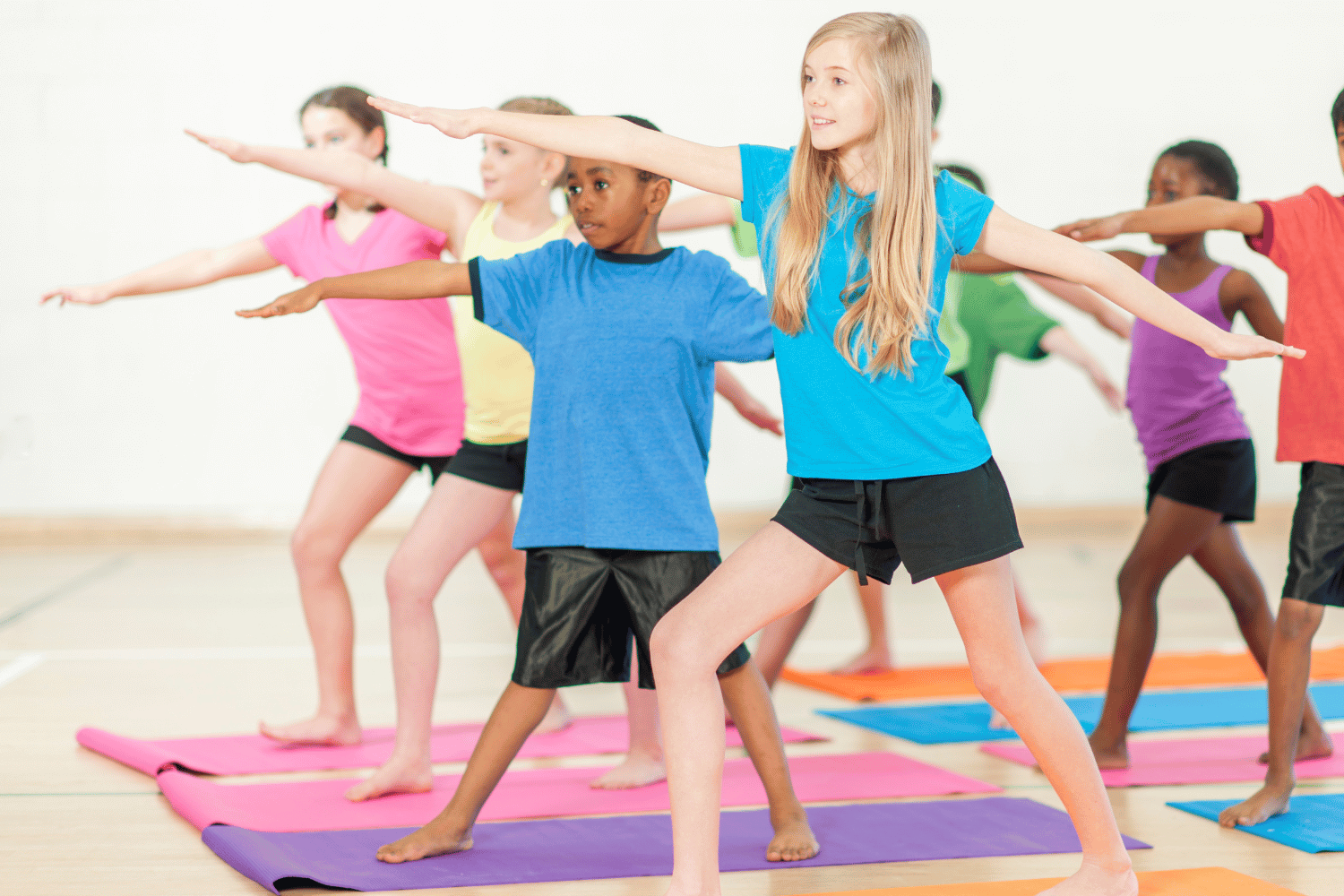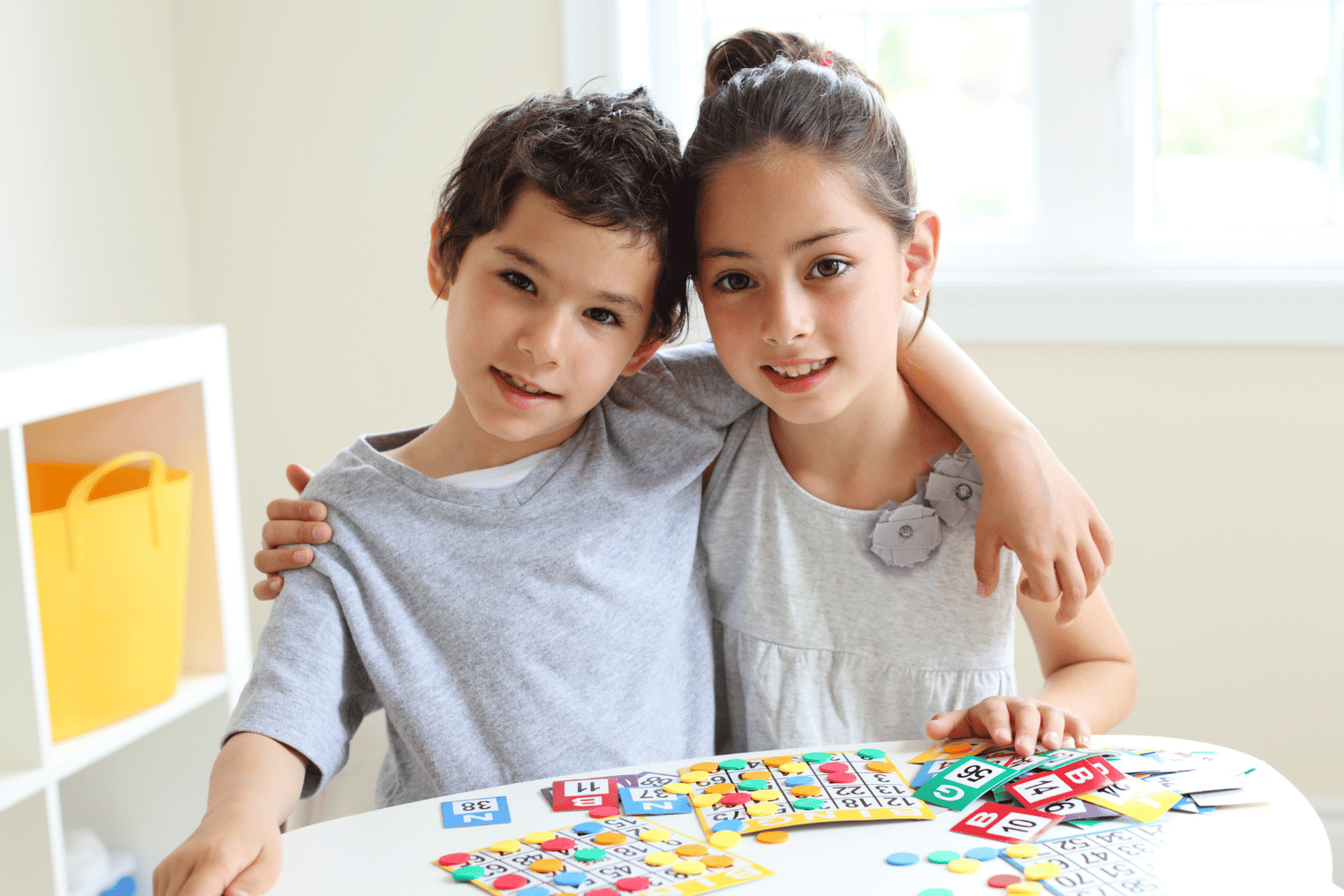Bullying is a serious issue that affects many children around the world. Schools are a particularly difficult place for many kiddos, and up to 80% of kids have said they’ve experienced bullying.
October is anti-bullying month, so at my school we are focusing on some ways to help bring awareness to the topic. We are also hoping to give them some practical ways to combat bullying and build friendships and cooperation instead.
Anti-bullying lessons with activities and games are always more memorable than simple discussions.

Bullying can be hard to define for kids. Many times they think that teasing is bullying, and it can certainly be something that leads to it. Teasing is not great either, but bullying definitely requires the assistance of adults to help stop the problem.
What is Bullying?
Bullying is when someone repeatedly hurts, threatens, or makes another person feel uncomfortable on purpose.
It can take different forms, like physical bullying (hitting, pushing), verbal bullying (name-calling, teasing), or social bullying (excluding, spreading rumors).
When I tell kids to think about bullying, I tell them to imagine if someone was mean to you, again and again, making you feel sad or scared. And they didn’t stop even after you told them to.
That’s not okay, and it’s like trying to take away your happiness. Bullying is a lot like being a “bad friend” who doesn’t treat others kindly. But it keeps happening over and over again.
Here’s what you can say to your kiddos or classroom:
We want everyone to feel safe, happy, and respected, so it’s essential to speak up and help stop bullying when we see it happening to someone else. If you ever see or experience bullying, remember to tell a trusted adult, like a teacher, parent, or school counselor, so they can help make it stop. We all deserve kindness and respect!
During anti-bullying month, we talk a lot about ways we can stop bullies, and also how we can make sure bullies don’t feel the need to hurt others in the first place.
A lot of times, bullies pick on others because they feel left out, hurt, or lost. They don’t know how to cope with these feelings and so they hurt others too.
We can help prevent bullies from being mean, by making sure we are nice and helpful to everyone, and we are inclusive.
How to Teach about Anti-Bullying to Kids with Activities
Sitting around talking about our experiences with bullies or bullying can be very effective, but kids learn more by doing, or by acting things out.
To make the learning process enjoyable and effective, here are eight fun ways to teach kids about anti-bullying through yoga, mindfulness techniques, and games.
Storytelling Sessions
Start by sharing age-appropriate stories that revolve around themes of kindness, empathy, and standing up against bullying. Encourage kids to express their thoughts and feelings about the characters and their actions.
You can incorporate mindfulness techniques by having the children close their eyes, take deep breaths, and imagine themselves in the shoes of the story’s characters. Use beanie babies or other small animals to help act it out.

Yoga Poses with a Affirmations
Introduce a series of yoga poses that promote self-confidence, self-awareness, and inner strength. Assign each pose a positive affirmation related to anti-bullying, such as “I am strong,” “I am kind,” or “I am brave.”
As kids practice these poses, they can repeat the affirmations to boost their self-esteem and resilience.
Then, turn it around and pair them up with a partner. Have them mirror each other, do the poses, and say the affirmation with “YOU ARE” instead of “I am”. This way they can build each other up as well.

Mindful Breathing
Teaching kids to stay calm and centered in challenging situations is essential. Conduct mindfulness exercises where children learn to focus on their breath.
Encourage them to use these techniques when they encounter bullying or stressful situations. Breathing exercises can help them stay composed and make better choices in the face of adversity.
Here’s a big list of our favorite breathing exercises.
Partner Yoga Poses for Cooperation and Friendship Building
Partner yoga poses for kids can be a delightful way to promote kindness, teamwork, and cooperation. These poses encourage children to connect with each other, fostering empathy and communication. Here are five partner yoga poses for kids along with descriptions:
- Partner Tree Pose (Vrksasana):
- Stand facing your partner, close enough to touch hands. Reach out and hold hands with your partner while balancing on one foot.
- Both partners lift their opposite foot and place the sole against the inside of their calf or thigh. Find your balance and encourage each other to stand tall like strong trees.
- Partner Boat Pose (Navasana):
- Sit facing your partner, knees bent, and feet flat on the ground. Hold each other’s hands and lean back slightly, lifting your feet off the ground.
- Try to straighten your legs, forming a “V” shape with your bodies. Work together to maintain balance and hold the pose, as if you’re floating together in a boat.
- Partner Seesaw (Pashchimottanasana):
- Description: To begin, both partners sit facing each other with their legs extended and feet touching. Gently clasp hands with your partner, ensuring a firm but comfortable grip. As you both inhale, lengthen your spines and sit up tall, forming a straight line from head to toe.
- On the exhale, one partners lean forward, and the other leans back slightly to help them stretch. Imagine creating a seesaw-like movement, with one partner lowering their torso as the other partner’s torso rises. Continue to communicate and coordinate your movements, finding a balance that works for both partners.
- Partner Butterfly Pose (Baddha Konasana):
- Description: Sit facing your partner, feet touching, and hold hands. Gently flap your knees up and down like butterfly wings, coordinating your movements with your partner.
- This pose encourages synchronization and a sense of togetherness, much like two butterflies dancing.
- Double Warrior Pose (Virabhadrasana II):
- Description: Stand next to your partner, about an arm’s length apart. Take a step forward with one leg, bending the knee at a 90-degree angle while keeping the other leg straight behind you.
- Your partner mirrors your stance by taking a step backward with the opposite leg. Extend your arms out to the sides, parallel to the ground, and gently support each other around the shoulders. This pose symbolizes strength and unity as you both face the same direction, like warriors ready to conquer challenges together.
Role-Playing Games
Engage children in role-playing scenarios that revolve around bullying. Assign them different roles, including the bully, the victim, and the bystander.
Encourage kids to explore how they would react and what actions they can take to stand up against bullying. This interactive approach helps them understand the importance of empathy and intervention.
I always start these scenarios using beanie babies or other small stuffed animals. That takes a little pressure of the kids and helps them feel more confident.
Anti-Bullying Bingo
Create a bingo game with squares that feature various anti-bullying behaviors, such as “Helped a friend in need,” “Stood up against bullying,” or “Listened and showed empathy.”
Kids can mark off these behaviors as they witness or perform them in their daily lives. Or you can make a class-sized bingo board and post it on the wall. This helps them notice these behaviors in others and give each other more positive praise.
Plus you can use it is a motivation for a class prize 🙂

Art and Creativity
Art can be a powerful tool for self-expression and communication. Organize art sessions where kids create anti-bullying posters, drawings, or crafts that convey messages of kindness, acceptance, and inclusion. Display their artwork prominently in the classroom or school to remind everyone of the importance of standing against bullying.
Mantras with positive affirmations, images of friendship, and global themes are all great ideas for these art projects.
Friendship Bracelet Activity
Gather kids to make friendship bracelets together. While crafting, discuss the meaning of friendship, empathy, and how they can be supportive friends. Encourage them to give these bracelets to their peers as a symbol of their commitment to creating a supportive and bully-free environment.

Team-building Games
Incorporate team-building games and activities that emphasize cooperation, teamwork, and the strength of unity. These games can help children develop strong bonds, making it less likely for bullying to occur within their group.
Activities like “trust falls,” blind block walks, and group problem-solving can foster positive relationships and mutual respect.
Some of our favorites are obstacle course relays, the pretzel knot, and a down dog tunnel!
Here are a few of our other favorite group yoga games.
Teaching kids about anti-bullying through yoga, mindfulness techniques, and games can be a fun and effective way to instill important values and skills.
By engaging their minds and bodies in these activities, children not only learn to recognize and combat bullying but also develop a strong sense of empathy, self-confidence, and resilience.
These lessons will not only benefit them in school but also prepare them to become compassionate and responsible individuals in the broader world.

